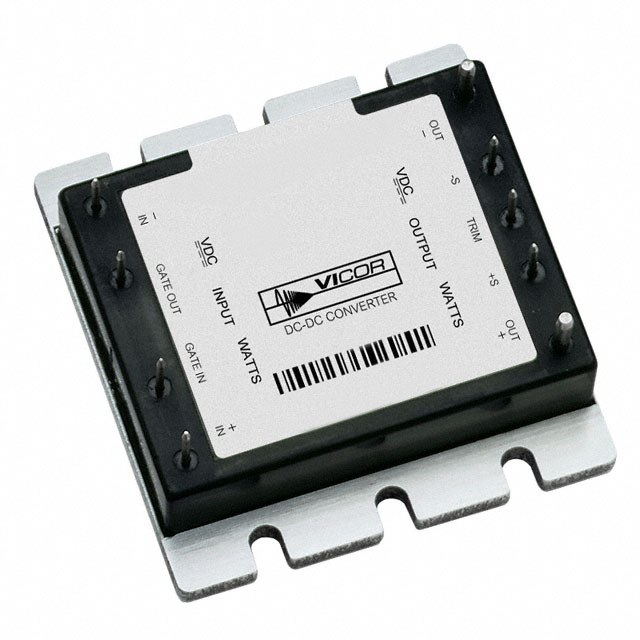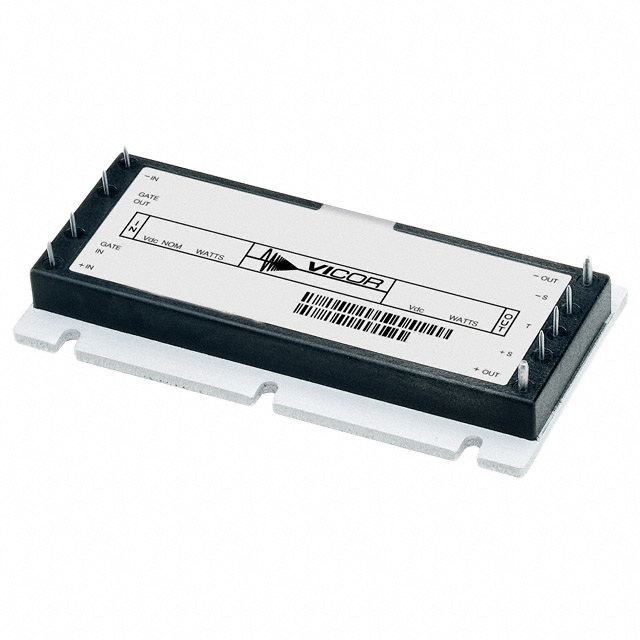
Unveiling the Hall Effect Sensor: Working Principles and Applications
Global electronic component supplier ERSAELECTRONICS: Rich inventory for one-stop shopping. Inquire easily, and receive fast, customized solutions and quotes.
What is Hall Effect Sensor?
.jpg?x-oss-process=image/auto-orient,1/quality,q_70/format,webp)
At its core, a Hall Effect Sensor is a transducer that converts a magnetic field into an electrical signal. It consists of two sides that are connected by electrical contacts and a thin semiconductor material, usually silicon. There is a voltage difference (called a Hall voltage) across the contacts in direct proportion to the strength of the magnetic field when it is applied perpendicular to the semiconductor's surface. Electronic circuits can then be used to measure and interpret this voltage.
What Does a Hall Effect Sensor Do?
A Hall effect sensor's main job is to find out if there is a magnetic field there or not. The strength of the magnetic field is indicated by the generated Hall voltage. The Hall voltage can be utilized for the following, depending on the application and sensor design:
Digital Switching: The sensor can function as a switch by establishing a threshold voltage level. The sensor output flips between on and off states according to how much the magnetic field strength raises or lowers the Hall voltage.
Analog Measurement: The magnetic field strength can be analogously represented by continually measuring the Hall voltage.
Can a Hall Effect Sensor Detect Metal?
Metal cannot be detected by Hall effect sensors directly. On the other hand, they work well for figuring out whether a metal object has a magnet attached to it. The Hall effect sensor will sense the magnetic field of the magnet and indirectly indicate the metal object's vicinity.
Video related to How Hall Effect Sensors Work
How Does a Hall Effect Sensor Work?
A Hall effect sensor's operation depends on how charged particles, or electrons, behave in a current-carrying conductor when a magnetic field is present. Here's a summary of the crucial actions:
Current Flow: The semiconductor material in the sensor is subjected to an electrical current. Within the substance, these mobile electrons travel about freely.
Magnetic Field Introduction: The Lorentz force acts on the electrons when a magnetic field perpendicular to the direction of current flow is introduced. The electrons are pushed toward one side of the semiconductor by this force.
Hall Voltage Generation: A depletion zone forms on one side of the semiconductor and an accumulation zone forms on the other due to the deflection of electrons. This imbalance causes a detectable voltage differential between the sensor's contacts which is referred to as the Hall voltage.
Signal Strength: The Hall voltage's strength is directly correlated with the applied magnetic field's strength. Higher magnetic fields will deflect electrons more, increasing the Hall voltage as a result.
How to Use Hall Effect Sensor?
There are multiple steps involved in using a Hall effect sensor:
Choosing the Right Sensor: Choose a sensor that meets the requirements of your application. Think about things like the operating voltage, the range of the magnetic field intensity, the type of output (analog or digital), and the physical dimensions.
Powering the Sensor: Provide the sensor with the necessary voltage according to the datasheet parameters.
Connecting the Sensor: As directed by the datasheet, attach the sensor's output, which is normally two or three pins, to your electronic circuit. Depending on the kind of sensor, the result could be:
Digital: For digital switching applications, connect to an input pin on a microcontroller. The threshold level for switching may need to be established using a voltage comparator circuit.
Analog: To continually measure the Hall voltage, connect to a microcontroller's analog-to-digital converter (ADC). This makes it possible to regulate in proportion to the strength of the magnetic field.
Calibrating the Sensor: Sensor calibration may be necessary for some applications to optimize the sensor's output range or sensitivity. Usually, to do this, you have to use software calibration methods in your microcontroller program or tweak internal resistors.
How to Test Hall Effect Sensor?
Two main approaches are available for testing a Hall effect sensor:
Multimeter Test (Basic Check): This technique offers a fundamental functioning check. A multimeter and a magnet are required:
In the DC voltage mode, set the multimeter.
Attach the multimeter's positive lead to the power supply pin of the sensor and its negative lead to the ground pin.
Give the sensor some power. The operating voltage (e.g., 5V) of the sensor should be displayed by the multimeter.
Place a powerful magnet near the sensor's assigned sensing area when it is powered on (see the datasheet). A discernible shift in the multimeter value should occur. Depending on the switching threshold, the reading from digital output sensors may suddenly leap to a high or low voltage. Depending on the polarity of the magnet, the voltage for analog sensors may rise or fall.
Take the magnet out of the sensor's way. The multimeter reading ought to go back to where it was.
Important Note: Since this is a rudimentary examination, not all possible problems with the sensor may be shown.
Oscilloscope Test (Advanced): An oscilloscope can be used to examine the output signal from the sensor in greater detail for a more thorough test. With this technique, you can see how the sensor responds to different magnetic field intensities in terms of signal form, noise level, and reaction time. For precise oscilloscope testing instructions, consult the datasheet for the sensor.
Safety Considerations:
Certain Hall effect sensors are susceptible to electrostatic discharge (ESD), despite being usually safe. When working with these sensors, handle them carefully and adhere to the correct ESD handling protocols.
Where is Hall Effect Sensor Used?
The capacity of Hall effect sensors to detect and measure magnetic fields is the basis for their wide range of applications. Here are some prominent examples:
Automobile Industry: Hall effect sensors are frequently seen in automobiles for purposes such as:
Anti-lock braking systems (ABS): Anti-lock braking systems (ABS) use magnets to sense the rotation of a toothed metal disk to determine the speed of the wheel.
Crankshaft position sensors: Track engine timing by keeping an eye on the crankshaft's rotation.
Seat occupancy sensors: Recognize the presence of passengers to trigger airbags.
Consumer Electronics: They are involved in several gadgets, including:
Joypad controls: Use magnets to sense thumbstick movement.
Door and window switches: Use a magnet inserted into the frame to detect the presence of a closed door.
Brushless DC (BLDC) motors: Brushless DC (BLDC) motors use magnets to sense the position of the rotor to electronically compute the motor's output.
Industrial Automation: Applications for Hall effect sensors include:
Position sensing: Magnets affixed to moving elements can be used to detect the movement of robotic arms or conveyor belts.
Speed measurement: Use magnetically encoded discs to gauge the rotational speed of shafts or wheels.
Flow monitoring: Use magnetic flow meters to find the presence and rate of conductive fluids.
Conclusion
The Hall effect sensor is a useful component in many applications because it provides an exceptional balance between simplicity and functionality. Through a thorough comprehension of its operational principles, many applications, and pragmatic use concerns, Hall effect sensors can be proficiently integrated into projects to detect and measure magnetic fields. This can lead to inventive solutions in a range of industries.
FAQs
What is a Hall effect sensor used for?
Hall effect sensors use magnets to detect stuff:
Position sensing: Joypad controls, window/door switches, wheel rotation speed
Digital switching: Engine timing control, airbag sensors in cars
Speed measurement: Magnetic discs are used for speed tracking in speed measuring.
They are much-liked because they are easy to use, consume little power, and work well in certain situations.
What is the difference between a Hall effect sensor and a magnetic sensor?
Hall effect sensors are a specific type of magnetic sensor, but there are some key differences between them:
Operating Principle:
Hall effect sensor: This type of sensor makes use of the Hall effect, in which a magnetic field causes a voltage differential inside the device.
Magnetic sensor: A more general term for a range of methods, including magnetoresistance, magnetostriction, and inductance variations, used to detect magnetic fields is "magnetic sensor."
Focus:
Hall effect sensors: They work well in digital switching applications involving magnets, position detection, and speed measuring.
Magnetic sensor: Suitable for a wide range of applications, such as high-precision magnetic field measurements that aren't just position- or speed-related.
What are the cons of the Hall effect sensor?
Lower sensitivity: Unsuitable for extremely accurate magnetic field measurements.
Temperature matters: Temperature is important because extremes of heat or cold might affect how well they work.
EMI sensitive: Their readings may be impacted by electrical noise.
Lower resolution: Unsuitable for tracking very accurate position or speed.
Take these restrictions into account while selecting a sensor for your project!
Related Articles
- ·Insulated Gate Bipolar Transistor (IGBT): The Dragon Rider of High-Power Circuits
- ·Transistor Symbol: The Blockbuster Guide (With Zero Boring)
- ·ICD Electronics: Tiny Lightning, Relentless Reliability
- ·Smart Pill Dispensing Electronics: From Missed Doses to Mission Control
- ·Conditional Access Module (CAM): The Pay-TV Gatekeeper Engineers Actually Enjoy Reading About
- ·NC Formula Semiconductor: The Blockbuster Guide You Didn’t Know You Needed
- ·Electrosurgery Electronics: Turning RF Into a Surgical Superpower
- ·Endoscopic Imaging Electronics: Tiny Optics, Big Picture
- ·Instrument Cluster: The Dashboard Wizard That Makes You Feel Like Iron Man
- ·X-ray & CT Electronics: From Kilovolts to Reconstruction











.png?x-oss-process=image/format,webp/resize,h_32)










